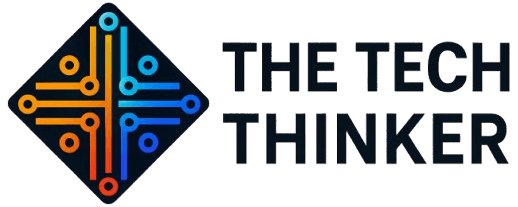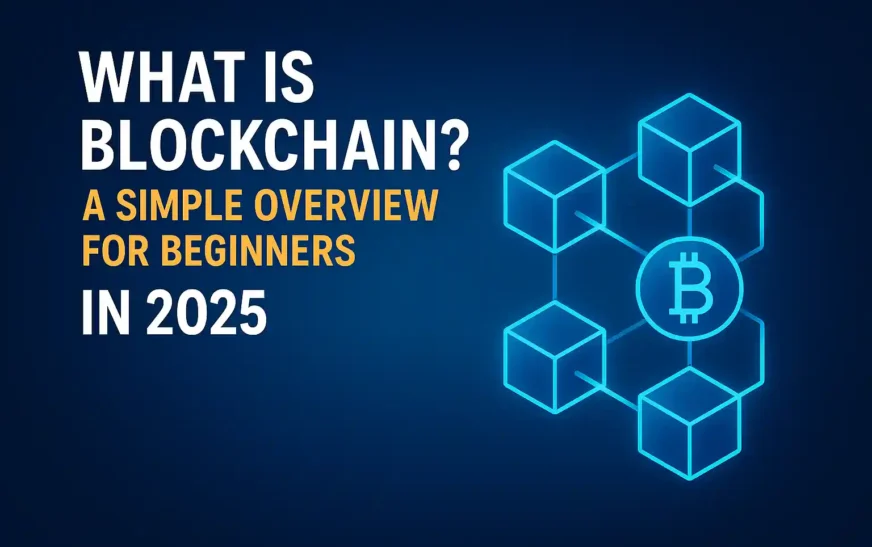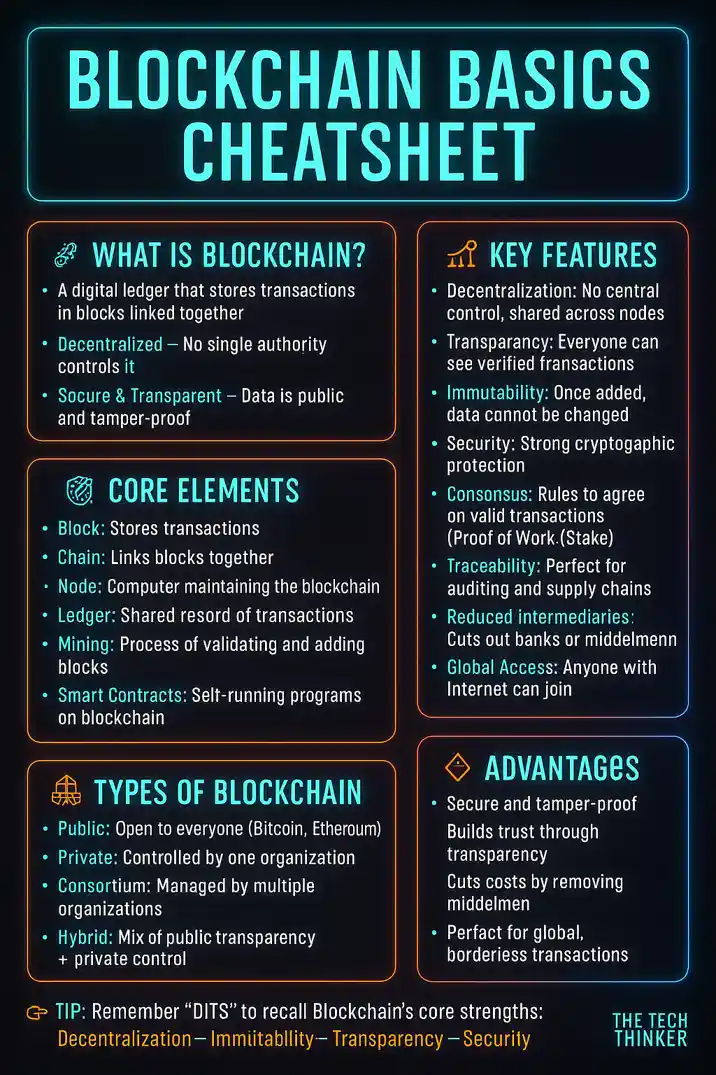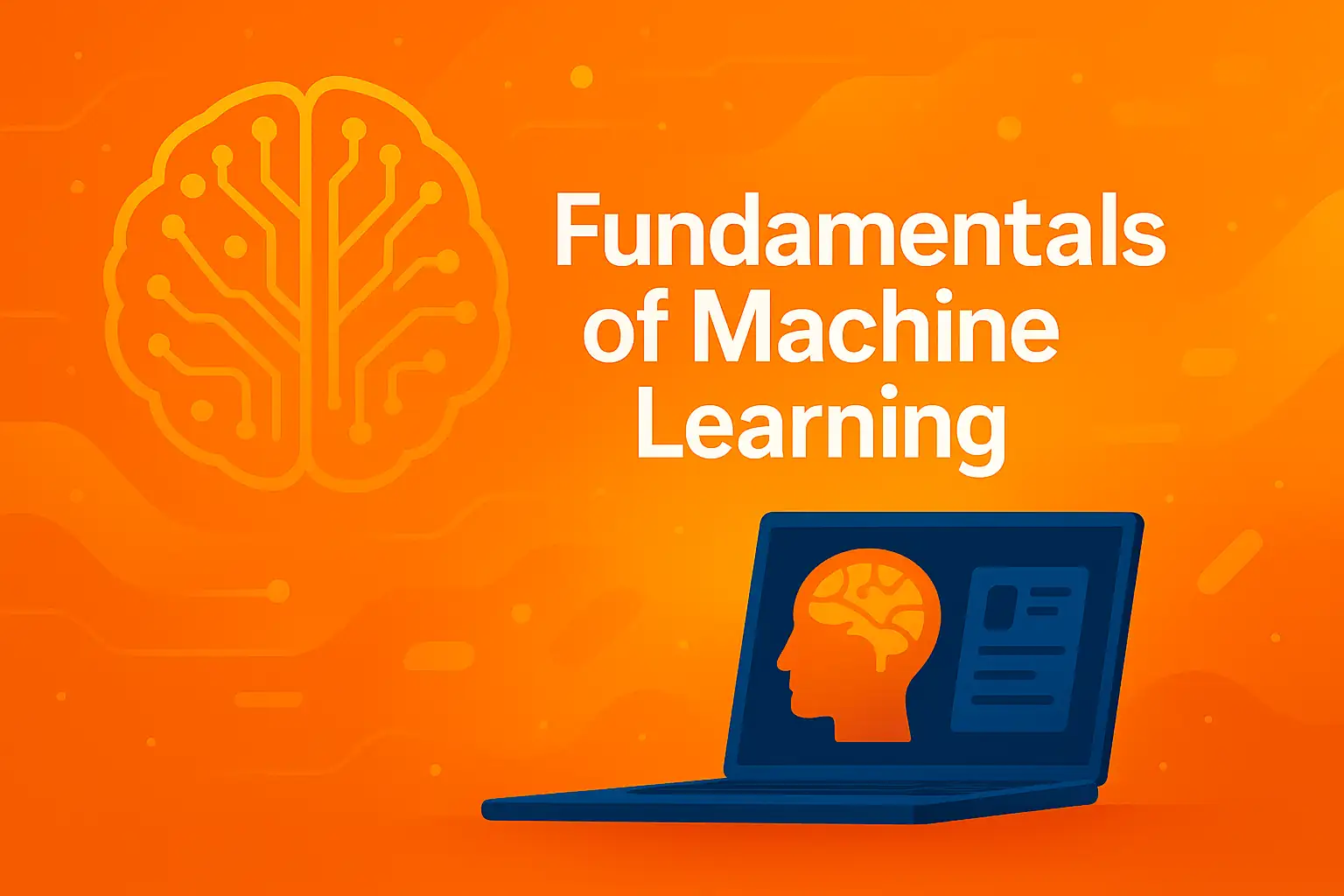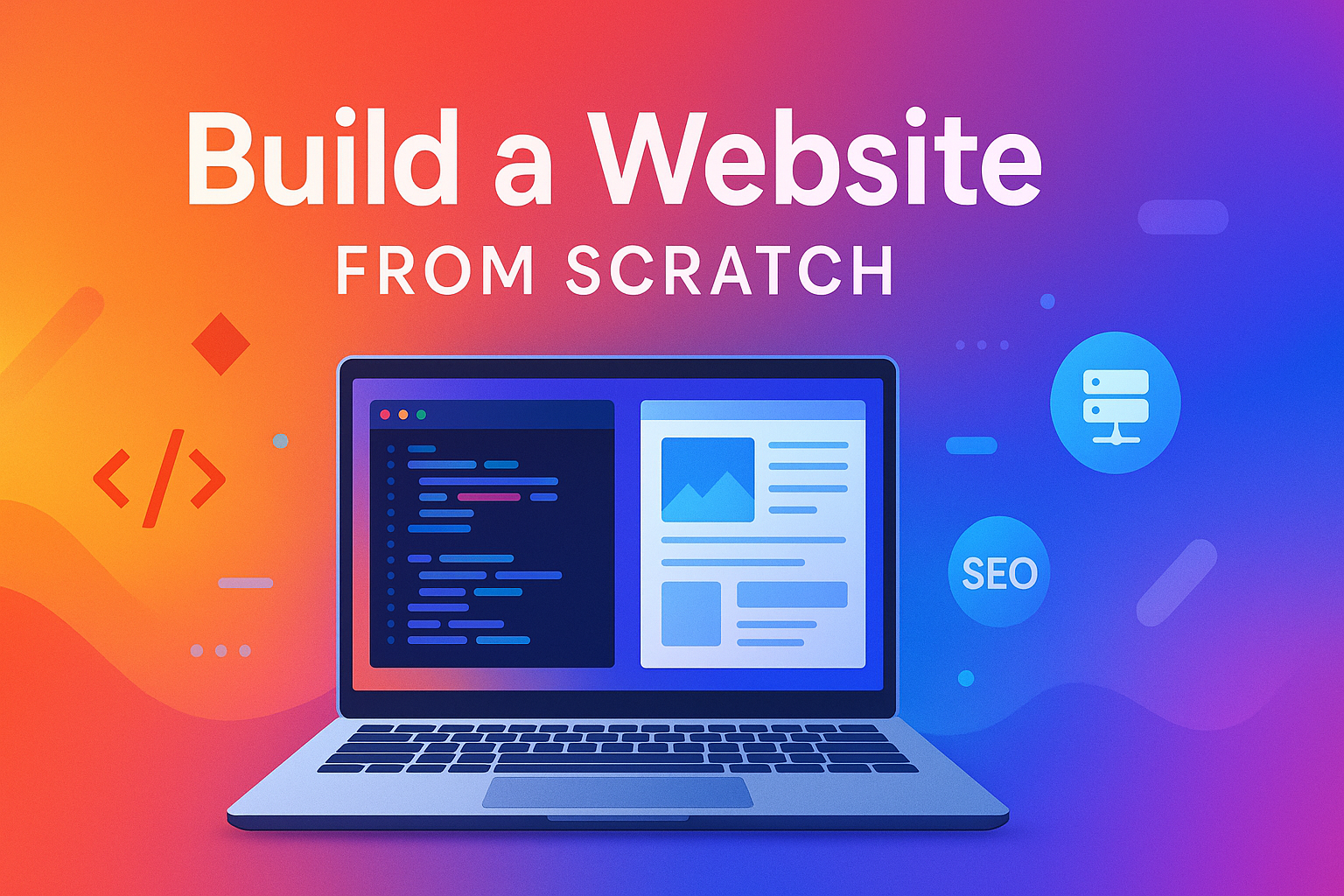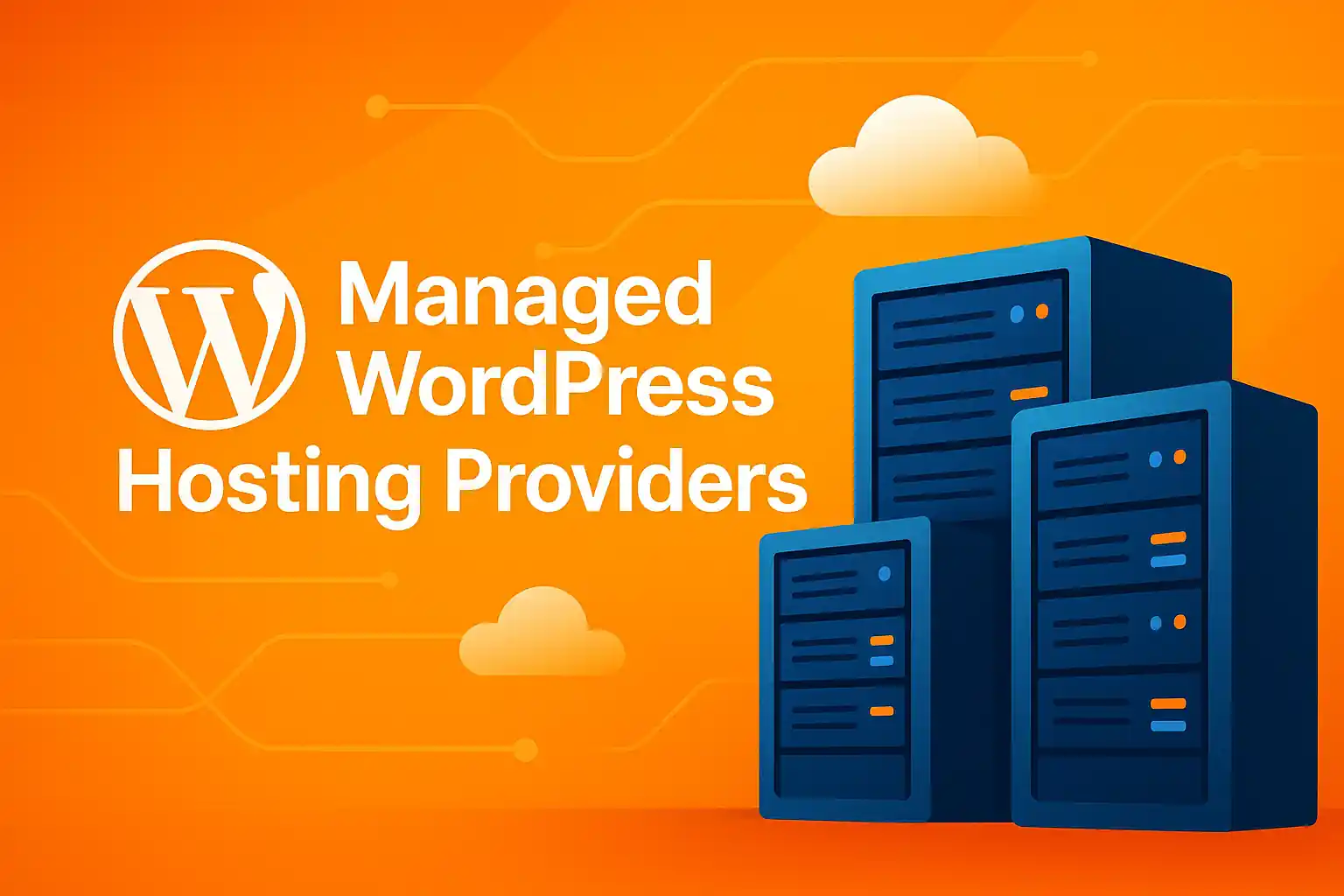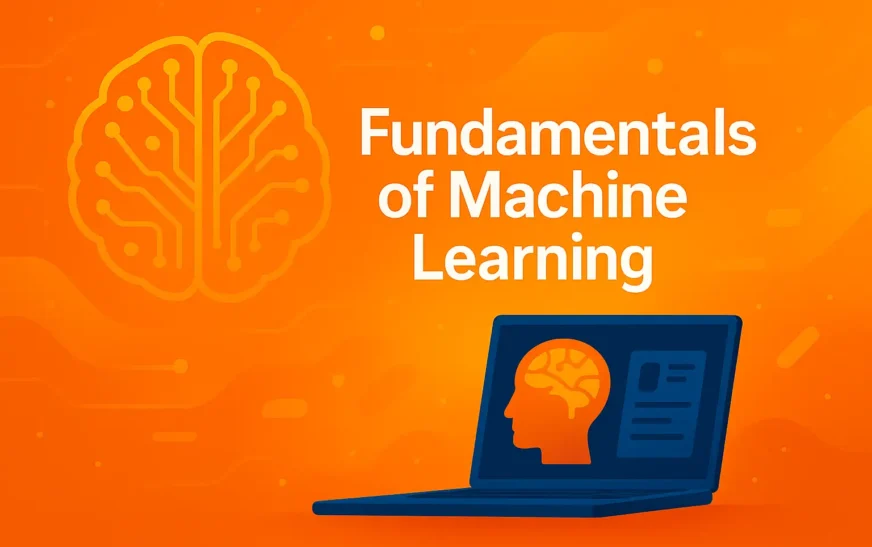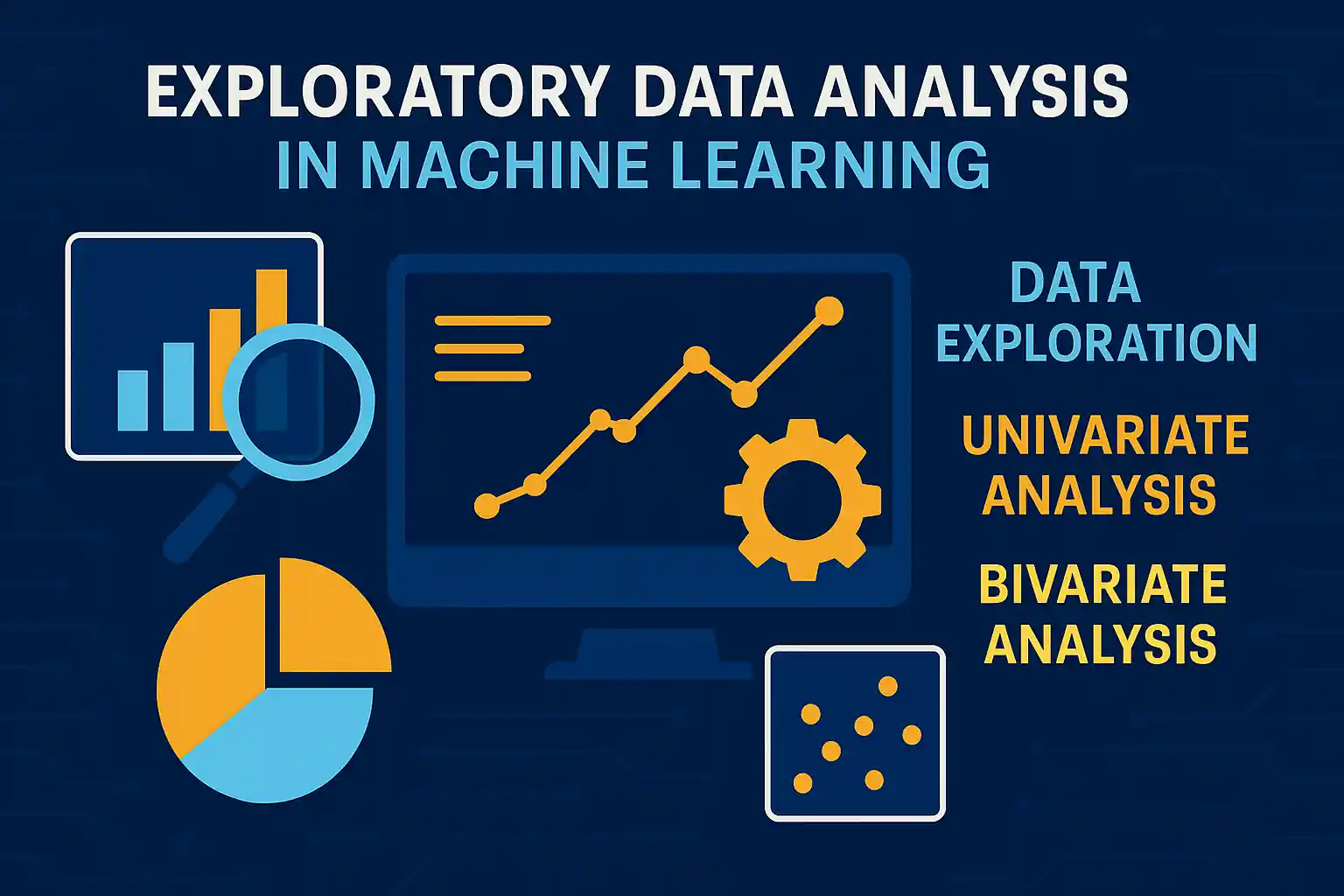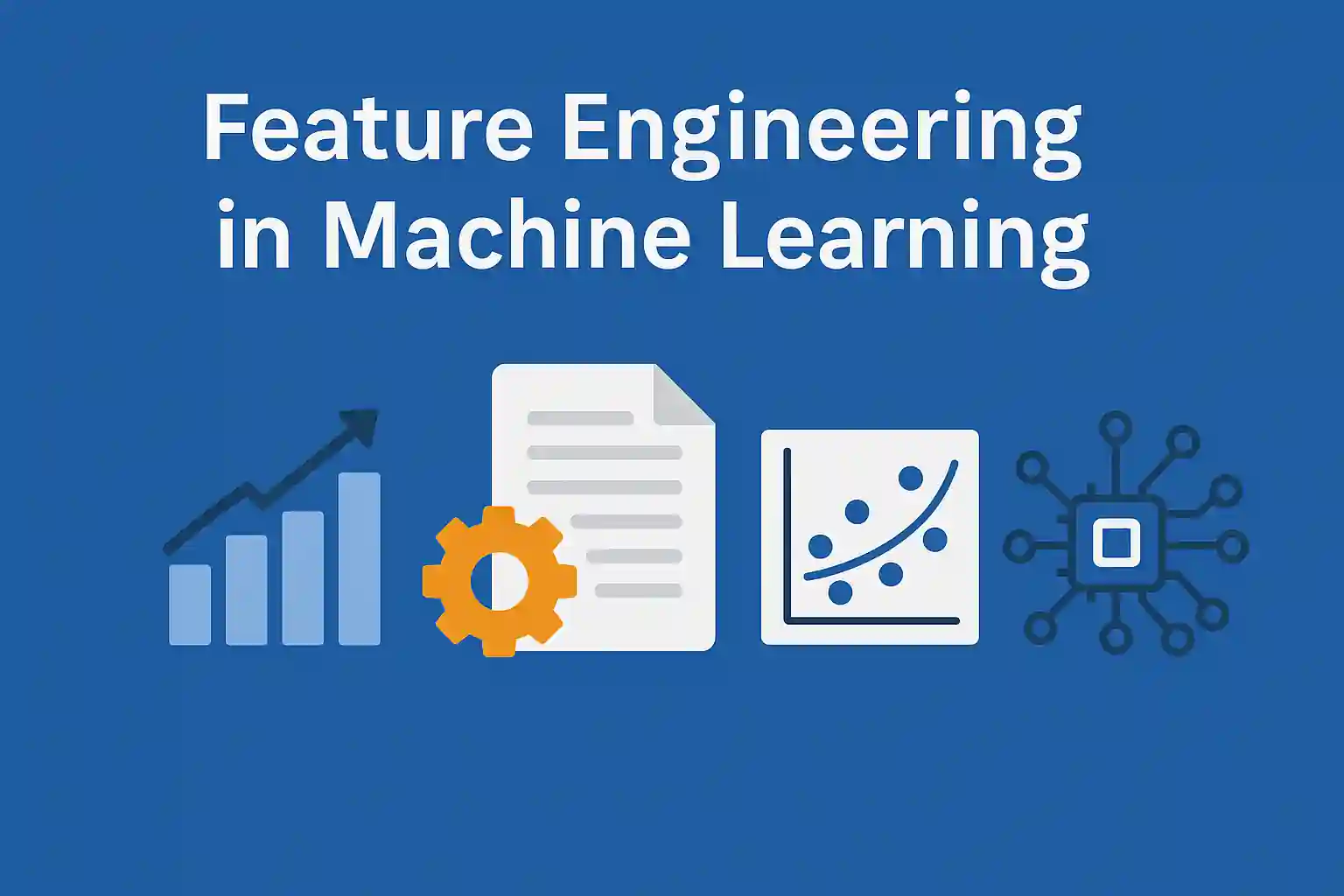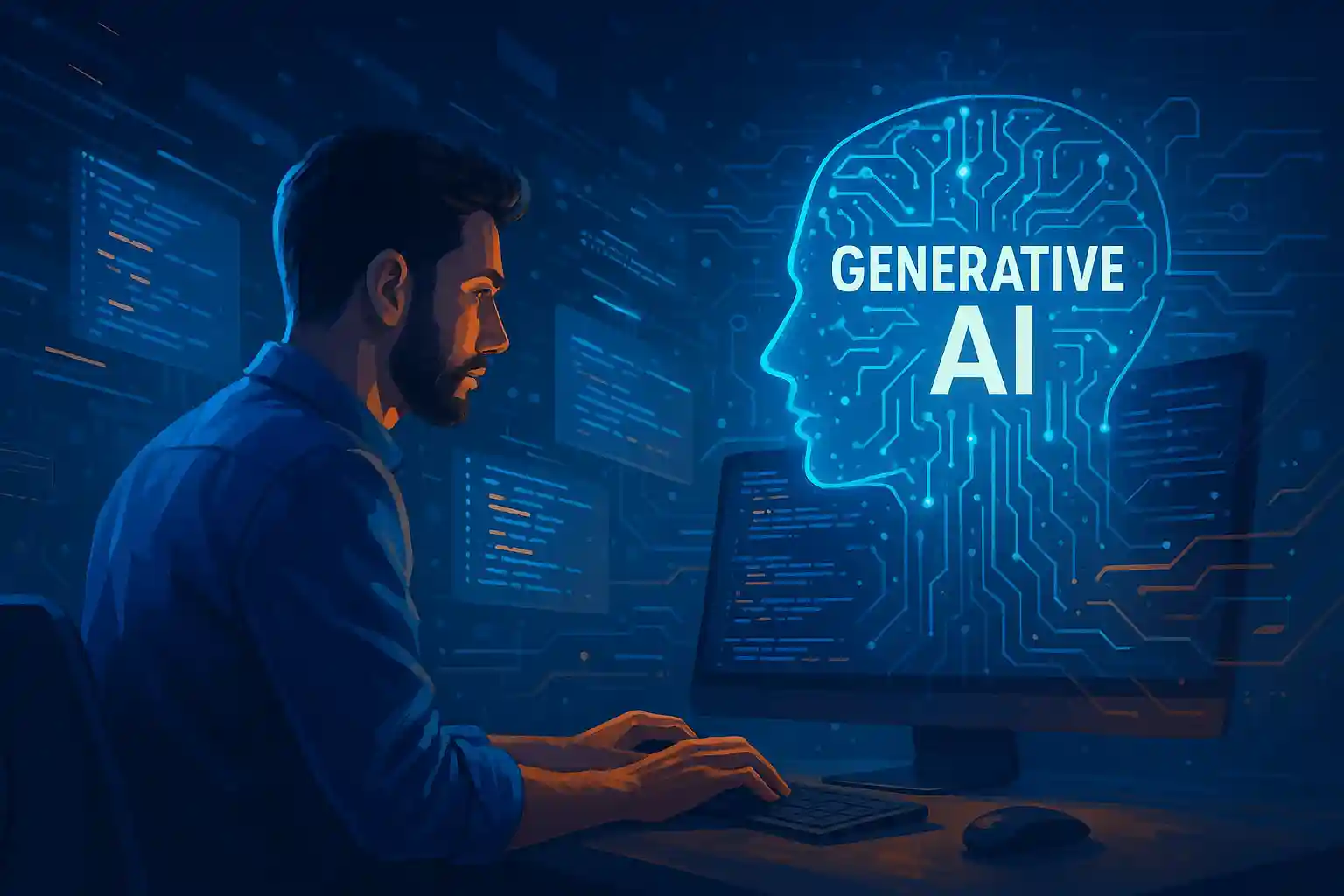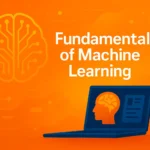What is Blockchain and Why It Matters
What is Blockchain? Blockchain is a digital, decentralized ledger that records transactions securely and transparently. Unlike traditional databases maintained by one central authority, blockchain distributes control across multiple computers (called nodes). This unique design makes it tamper-resistant, transparent, and highly secure.
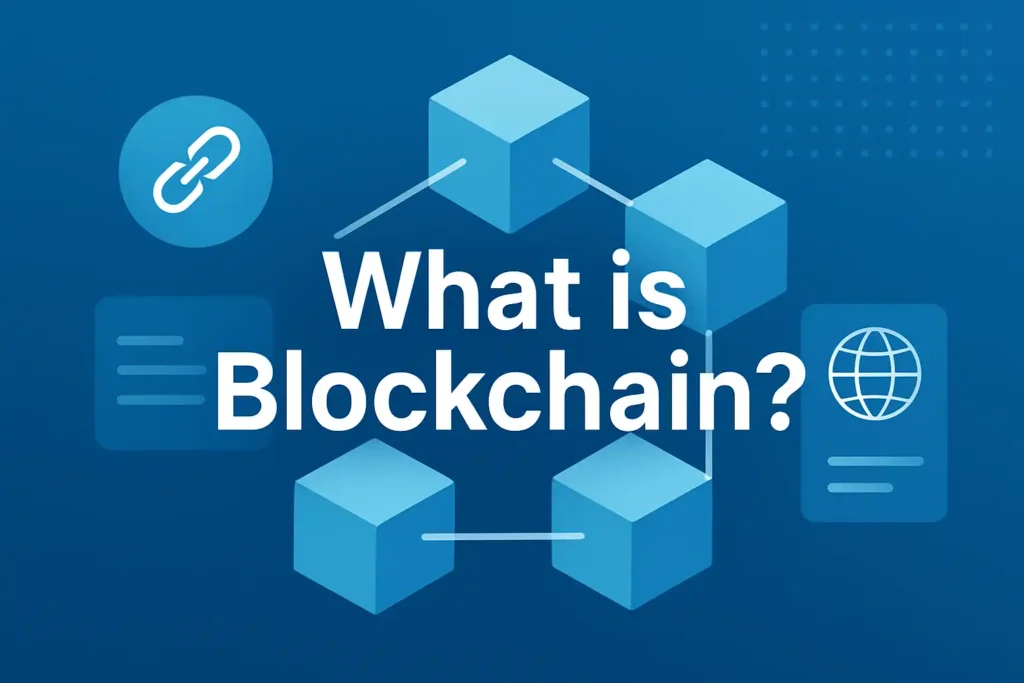
Why Should Beginners Learn Blockchain?
It powers Bitcoin, Ethereum, and most cryptocurrencies.
It’s the backbone of Web3 – the decentralized internet.
Industries like finance, healthcare, logistics, and real estate are adopting it.
Skills in blockchain are in high demand globally.
💡 Example: Imagine a notebook where each page records transactions. Once written, you cannot erase it. Every new page is linked to the last, creating a secure, verifiable chain of records. That’s blockchain in action.
How Does Blockchain Work?
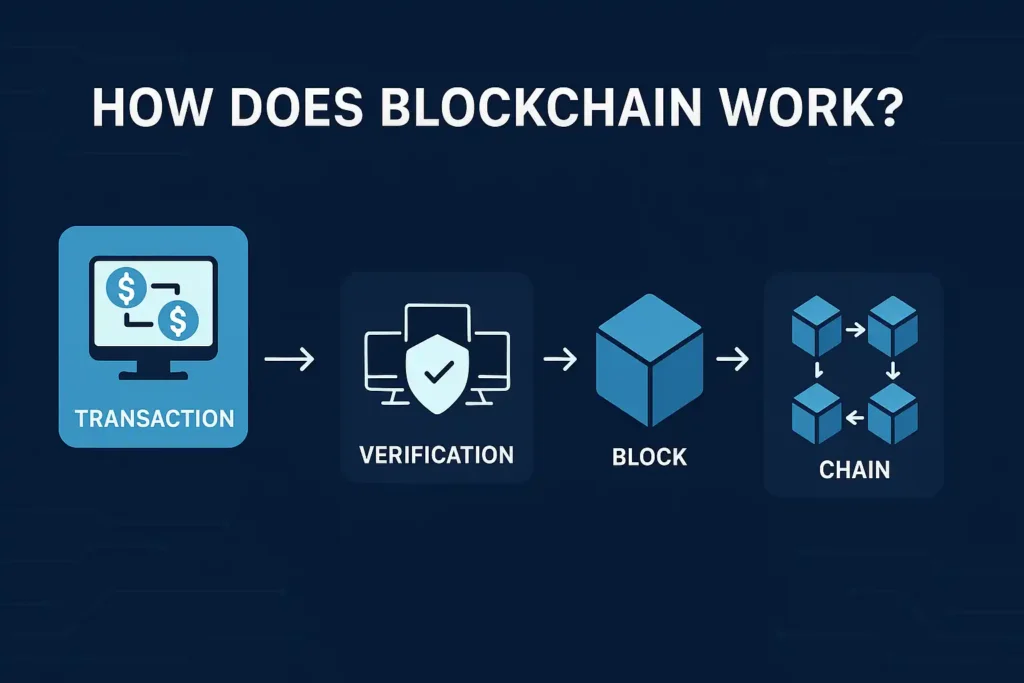
Understanding how blockchain works is key to understanding its power.
📦 Blocks, Chains & Nodes Explained
Blocks: Digital containers holding transaction data and a unique cryptographic hash.
Chain: Each block is linked to the previous one, forming an immutable chain.
Nodes: Computers that validate and store copies of the blockchain.
🔄 Step-by-Step Process

Transaction Initiated: Example: Alice sends 2 Bitcoin to Bob.
Broadcast to Network: The transaction is shared with all nodes.
Verification: Nodes use consensus mechanisms to check validity.
Block Creation: Verified transactions are grouped into a block.
Chain Update: The new block is added to the blockchain and shared across all nodes.
🔒 Why Blockchain is Secure
Uses cryptography to lock data.
Altering one block requires changing every block after it on thousands of computers – practically impossible.
💡 Real-World Example: Bitcoin’s network has never been successfully hacked despite handling billions in value, thanks to blockchain’s structure.
Key Features of Blockchain
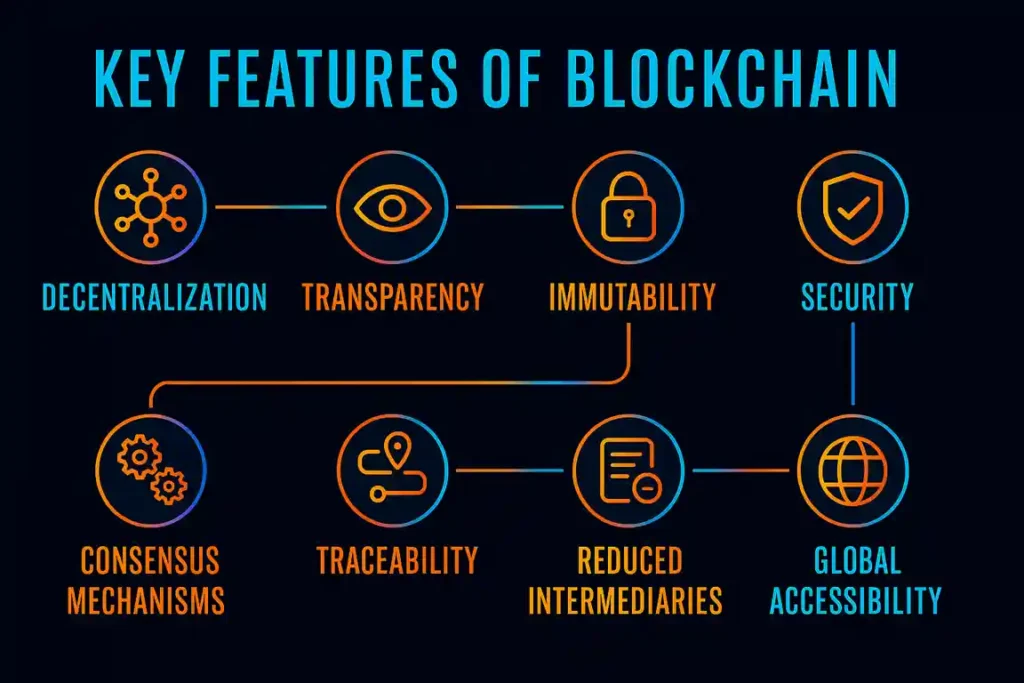
Decentralization: No central authority; distributed across nodes.
Decentralization in blockchain means there is no single boss or central server controlling everything. Instead, the data is shared across many computers (nodes) in the network. This makes the system more secure, transparent, and reliable because no one person or company can change the records, and even if one computer fails, the others keep the blockchain running.
Transparency: All participants can view verified transactions.
Transparency in blockchain means that everyone in the network can see the verified transactions. Once a transaction is added to the blockchain, it becomes visible to all participants, building trust because the data is open and cannot be secretly changed.
Immutability: Once added, data cannot be changed.
Immutability in blockchain means that once data is added, it cannot be changed or deleted. Every transaction is permanent, making the blockchain a secure and trustworthy record that no one can alter later.
Security: Strong cryptographic algorithms.
Security in blockchain comes from using strong cryptographic algorithms that lock and protect the data. This makes it extremely hard for anyone to hack, change, or fake transactions, keeping the blockchain safe and trustworthy.
Consensus Mechanisms: Ensure data validity (e.g., Proof of Work, Proof of Stake).
Consensus mechanisms in blockchain are rules that make sure all participants agree on which transactions are valid. They keep the data accurate and prevent fraud. Popular examples are Proof of Work (PoW), used in Bitcoin, and Proof of Stake (PoS), used in newer blockchains.
Traceability: Ideal for auditing and supply chains.
Traceability in blockchain means every transaction can be tracked from start to finish. This makes it perfect for auditing and supply chains, where you can see the complete history of a product or data without any gaps or tampering.
Reduced Intermediaries: Cuts out banks or middlemen in transactions.
Reduced intermediaries in blockchain means it can remove banks or middlemen from transactions. People or businesses can send data or payments directly to each other, making the process faster, cheaper, and more efficient.
Global Accessibility: Anyone with internet access can participate.
Global accessibility in blockchain means anyone with an internet connection can join and use it. There are no location or banking barriers, allowing people worldwide to send, receive, and verify transactions easily.
Types of Blockchain
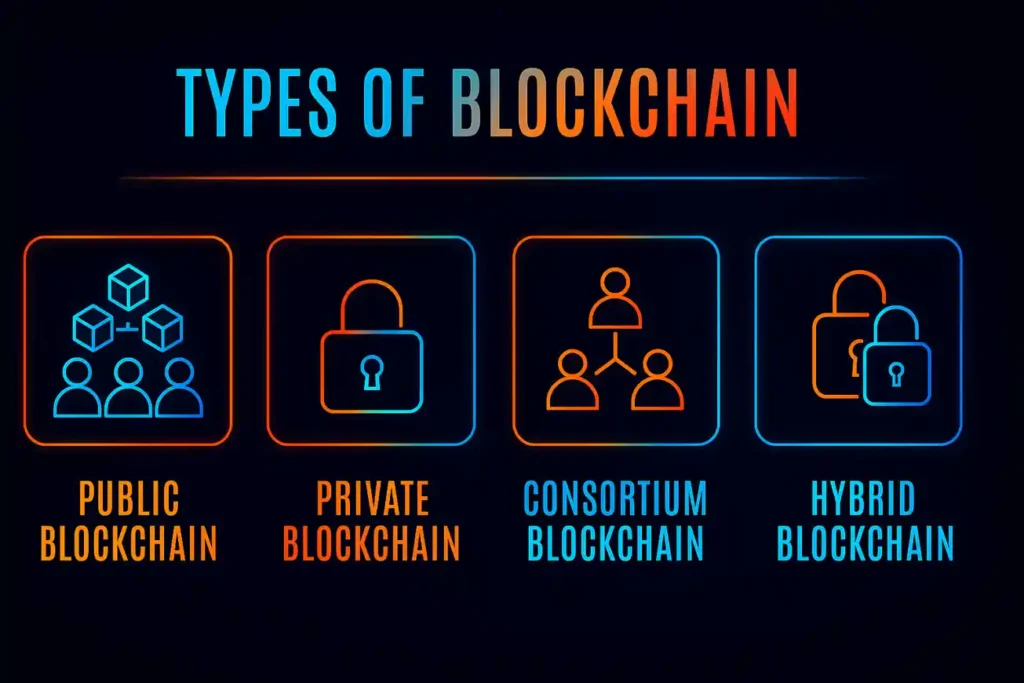
Public Blockchain
A public blockchain is an open network where anyone can join, view, and add transactions. It is fully decentralized, meaning no single person or company controls it. Examples include Bitcoin and Ethereum, where anyone with internet access can participate and help maintain the network.
Open to everyone.
Example: Bitcoin, Ethereum.
Private Blockchain
A private blockchain is a closed network controlled by a single organization. Only selected users can join, view, or add transactions. It offers more privacy and faster transactions compared to public blockchains, making it popular for businesses and internal company operations.
Restricted access; controlled by one entity.
Example: Hyperledger Fabric.
Consortium Blockchain(BC)
A consortium blockchain is a semi-private network managed by a group of organizations instead of one single authority. Only approved members can access and validate transactions. It combines controlled access with shared responsibility, making it useful for industries like banking, supply chains, and healthcare where multiple companies work together.
Managed by a group of organizations.
Example: R3 Corda used in banking.
Hybrid Blockchain(BC)
A hybrid blockchain combines features of both public and private blockchains. Some parts are open to everyone for transparency, while other parts are restricted for privacy and control. This makes it ideal for businesses and governments that need a balance between security, transparency, and confidentiality.
Mix of public and private.
Example: Healthcare and enterprise systems.
Blockchain Basics for Beginners
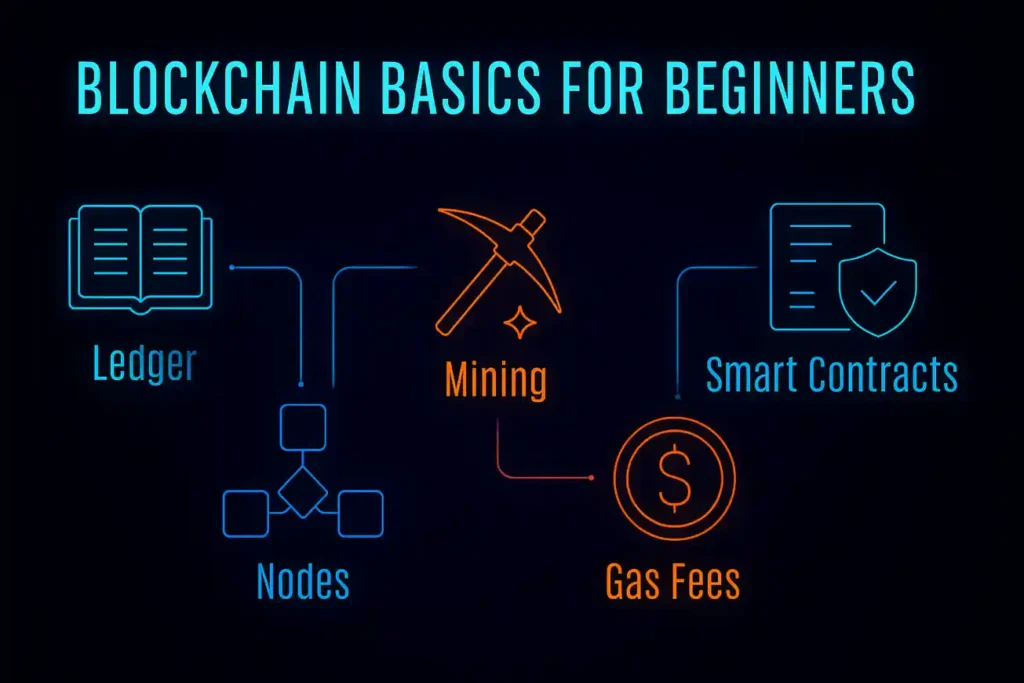
To simplify blockchain, here are terms you’ll often see:
Ledger: The digital record of all transactions.
Nodes: Computers maintaining the blockchain.
Mining: Validating transactions and adding new blocks.
Smart Contracts: Self-executing programs that run automatically.
Gas Fees: Network fees to process transactions.
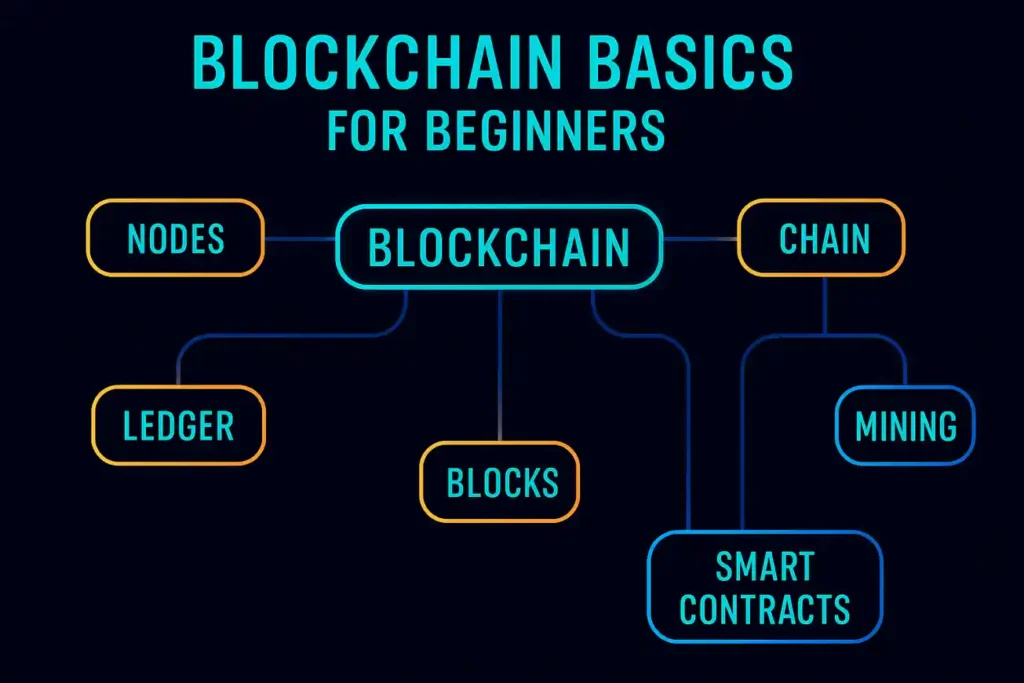
💡 Example: On Ethereum, a smart contract can automate renting property. Once conditions are met (payment), the contract executes without a third party.
Real-World Use Cases of Blockchain
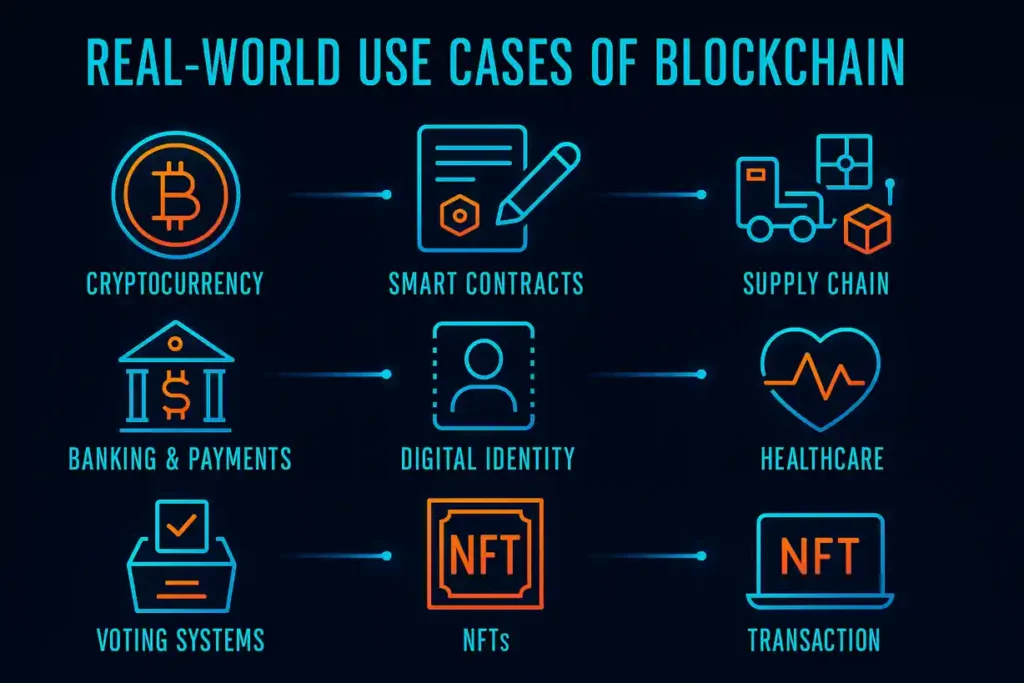
Blockchain is used in more than just cryptocurrency.
Cryptocurrency: Bitcoin, Ethereum, stablecoins.
Smart Contracts: Automating legal agreements.
Supply Chains: Tracking goods end-to-end.
Banking & Payments: Ripple for cross-border transactions.
Digital Identity: Secure online authentication.
Healthcare: Sharing tamper-proof medical records.
Voting Systems: Transparent, fraud-proof elections.
NFTs: Digital ownership of art, music, and assets.
💡 Example: Walmart uses blockchain to trace food supply chains, reducing time to track contamination from days to seconds.
Advantages of Blockchain
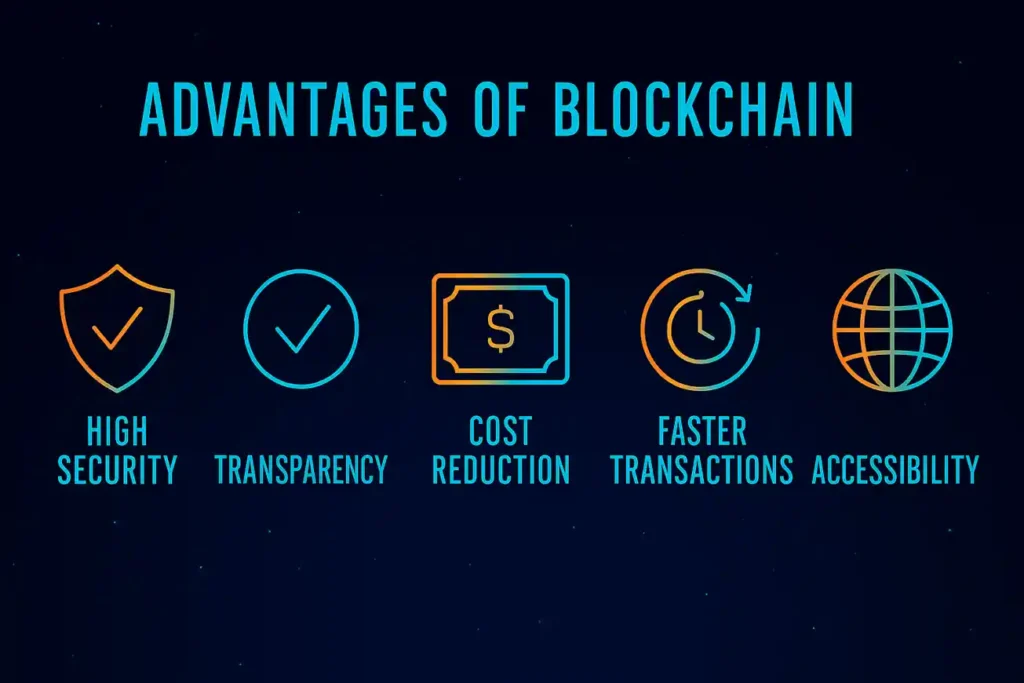
High Security: Cryptographic protection.
Transparency: Everyone sees the same data.
Cost Reduction: Eliminates intermediaries.
Faster Transactions: Especially cross-border payments.
Auditability: Perfect for tracking and compliance.
Accessibility: Open to anyone globally.
Limitations of Blockchain
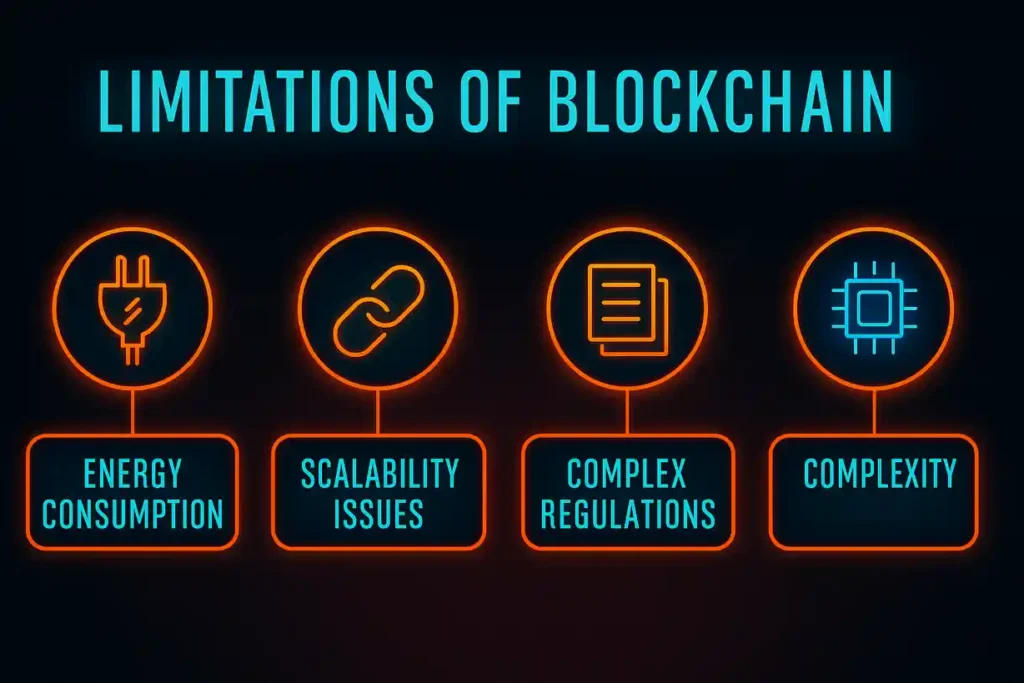
Energy Consumption: Especially in Proof of Work systems.
Scalability: Handling large transaction volumes is challenging.
Regulations: Legal frameworks are still evolving.
Complexity: Technical understanding required for implementation.
Blockchain vs Traditional Databases
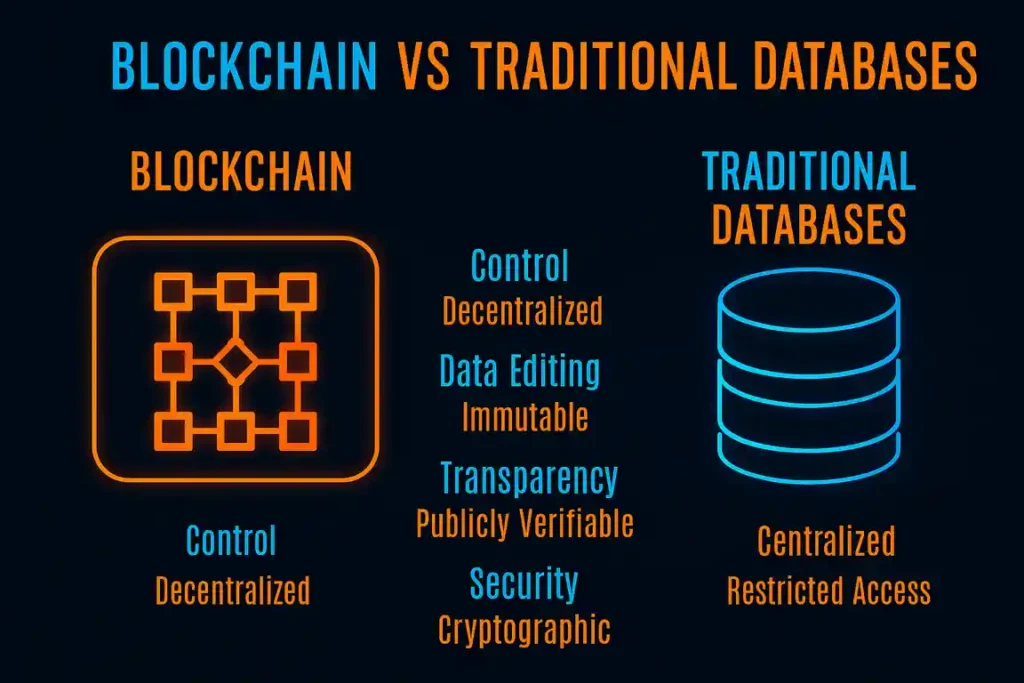
| Feature | Blockchain | Traditional Database |
|---|---|---|
| Control | Fully decentralized; data is managed collectively by multiple nodes in the network, with no single owner. | Centralized; controlled by one organization or administrator with full authority. |
| Data Editing | Immutable; once a transaction is recorded, it cannot be altered or deleted, ensuring data integrity. | Editable; administrators can update or delete records at any time, which can lead to tampering. |
| Transparency | Publicly verifiable; every participant can view and audit transactions in real-time for trust and openness. | Restricted access; visibility is limited to authorized users, reducing transparency. |
| Security | Uses cryptographic algorithms to protect and validate data, making hacking extremely difficult. | Relies on access control systems (passwords, roles); vulnerable if the central server is breached. |
| Consensus Mechanism | Changes require network-wide consensus via protocols like Proof of Work or Proof of Stake. | No consensus mechanism; decisions are made by the central authority or admin. |
| Fault Tolerance | Highly fault-tolerant; even if some nodes fail, the blockchain continues to function correctly. | Single point of failure; if the central server goes down, the entire database can become inaccessible. |
| Data Storage | Data stored in blocks linked cryptographically, creating a permanent chain of records. | Data stored in tables or files within a central server structure. |
| Performance | May have slower transaction speeds due to consensus and encryption overhead. | Generally faster for high-volume read/write operations because of centralized control. |
| Cost | Can reduce costs long-term by eliminating intermediaries but may require high initial setup and maintenance. | Typically lower initial setup costs but higher ongoing costs for maintenance and admin control. |
| Use Cases | Ideal for cryptocurrency, supply chain tracking, smart contracts, decentralized apps (dApps). | Best suited for internal company systems, CRM, ERP, and structured enterprise data. |
💡 Example: Banking systems use centralized databases; blockchain removes the need for a bank while maintaining trust.
The Future of Blockchain
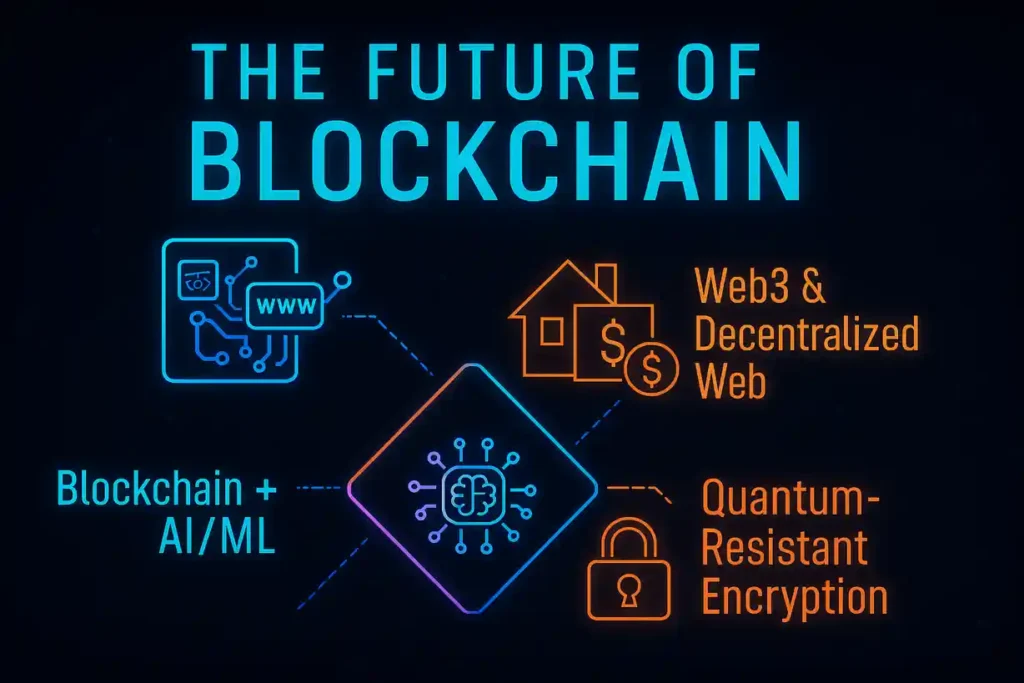
Web3 & Decentralized Web: Websites and apps powered by blockchain.
Tokenized Assets: Real estate, stocks, and IP on-chain.
Blockchain + AI/ML: Smarter contracts and analytics.
Quantum-Resistant Encryption: Preparing for quantum computing.
Government Integration: Regulations to enable mass adoption.
💡 Prediction: By 2030, Gartner predicts blockchain will underpin $3.1 trillion in new business value.
How Blockchain , AI, ML & Cloud Hosting Work Together
Curious about how modern tech connects? Blockchain, AI, ML, and Cloud Hosting are shaping the future together. Discover how these technologies work hand-in-hand to build secure, intelligent, and scalable systems
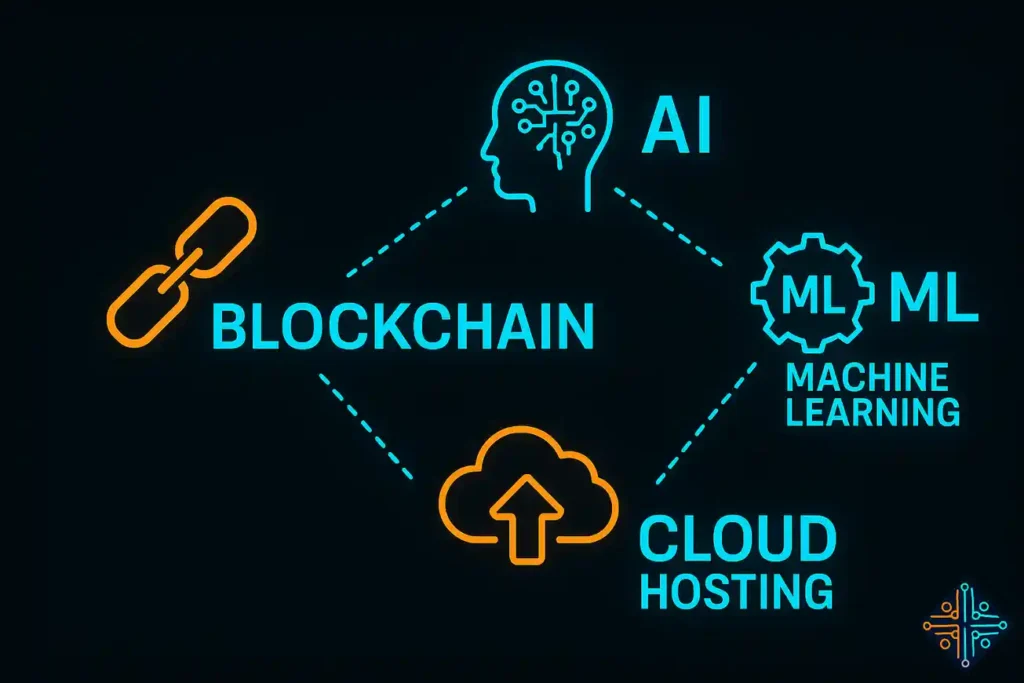
Blockchain + AI/ML
Secure AI Data: Blockchain can store training data for ML in a tamper-proof way, ensuring data integrity.
Decentralized AI Models: AI models can be shared and updated across a blockchain network without a central authority.
Explainable AI: Blockchain provides transparent logs of how AI makes decisions, useful for auditing and compliance.
Smart Contracts + AI: AI can trigger smart contracts automatically based on predictions or data patterns.
💡 Example: Healthcare AI models using blockchain to securely access patient data while ensuring privacy and audit trails.
Blockchain + Cloud Hosting
Decentralized Cloud: Blockchain can create distributed cloud storage networks (e.g., Filecoin, Storj).
Secure Hosting: Blockchain ensures data integrity for websites and apps hosted on the cloud.
Smart Billing: Automated hosting payments using blockchain-based smart contracts.
Data Backup Verification: Blockchain verifies that cloud backups are authentic and untampered.
💡 Example: Decentralized cloud hosting platforms where your website is stored across multiple blockchain nodes.
AI/ML + Cloud Hosting
AI-Powered Cloud Management: ML algorithms optimize server load balancing and cost efficiency.
Scalable AI Training: Cloud provides the compute power needed to train large AI/ML models.
AI as a Service (AIaaS): Cloud hosts AI/ML APIs that businesses can use without running their own infrastructure.
BC + AI/ML + Cloud Hosting
When combined:
AI/ML models run on cloud infrastructure.
Blockchain ensures data trust and transparency.
Cloud hosting provides scalable deployment.
AI adds intelligence and automation to blockchain apps and decentralized systems.
💡 Real Example:
A decentralized supply chain platform hosted on the cloud, where:
Blockchain records product movement.
AI/ML predicts demand.
Smart contracts automate payments.
Cloud ensures scalability and global access.
Blockchain-Cheat Sheet
Conclusion
So, what is Blockchain? It’s more than cryptocurrency; it’s a secure, transparent, decentralized way to build trust online. From finance to healthcare, blockchain is transforming industries and shaping the next generation of the internet.
For beginners, understanding blockchain basics is your gateway into Web3, cryptocurrencies, and decentralized apps.
Read Also
- Fundamentals of Machine Learning
- Large Language Model
- Agentic AI Platforms
- Top 10 Low‑Code & No‑Code Platforms
- AWS vs Azure vs Google Cloud
For Further Reference
IBM Blockchain Overview
🔗 https://www.ibm.com/topics/what-is-blockchain
(Explains blockchain basics, enterprise use cases, and integration with AI/Cloud.)Microsoft Azure – AI + Blockchain Integration
🔗 https://azure.microsoft.com/en-us/solutions/blockchain/
(Covers how cloud and AI services connect with blockchain.)AWS Blockchain and Machine Learning
🔗 https://aws.amazon.com/blockchain/
(Amazon Web Services resources on blockchain hosting and AI/ML integration.)Gartner Research on Blockchain and Cloud
🔗 https://www.gartner.com/en/information-technology/insights/blockchain
(Enterprise insights into blockchain and cloud hosting trends.)
Frequently Asked Questions
1. What is Blockchain in simple terms?
Blockchain is a digital ledger that records transactions in secure, linked blocks without a central authority.
2. How does Blockchain work with AI?
AI can analyze blockchain data, while blockchain ensures AI training data is secure and tamper-proof.
3. What is the difference between AI and Machine Learning?
AI is the broader concept of machines mimicking human intelligence; ML is a subset of AI that learns from data.
4. Can Blockchain and Cloud Hosting work together?
Yes, blockchain can secure data on cloud servers and create decentralized cloud hosting solutions.
5. What are the benefits of combining Blockchain and AI?
It improves data security, transparency, automation, and builds trust in AI decisions.
6. Is Blockchain necessary for Machine Learning?
Not required, but blockchain can make ML models more transparent and secure.
7. What is a Public Blockchain vs Private Blockchain?
Public blockchains are open to everyone; private blockchains are restricted to selected participants.
8. How does Cloud Hosting help AI and ML?
Cloud provides scalable computing power to train and deploy AI/ML models efficiently.
9. What industries use Blockchain, AI, and Cloud together?
Finance, healthcare, supply chains, logistics, and cybersecurity all use this tech combo.
10. What is a Smart Contract?
A smart contract is a self-executing program on a blockchain that runs when conditions are met.
11. Why is Blockchain considered secure?
It uses cryptographic algorithms and decentralized validation to protect data from tampering.
12. Can small businesses use AI, ML, and Blockchain?
Yes, cloud-based services make it affordable for startups and SMEs to adopt these technologies.
13. What is the role of Machine Learning in Blockchain?
ML can detect fraud, predict trends, and optimize blockchain network performance.
14. How does Decentralization help Cloud Hosting?
It distributes data across nodes, reducing single points of failure and improving reliability.
15. What is the future of Blockchain, AI, ML, and Cloud?
They are converging to create secure, intelligent, and decentralized digital ecosystems powering Web3 and next-gen apps.
👉 Follow The Tech Thinker for more blockchain, AI, and ML insights.
